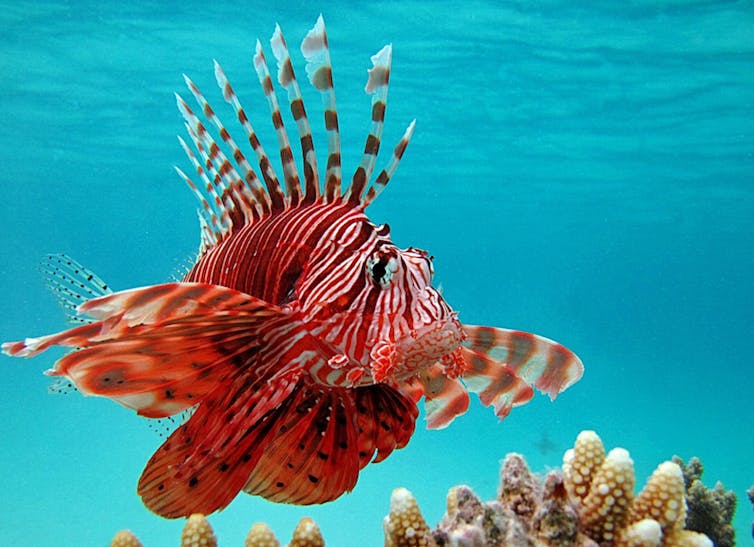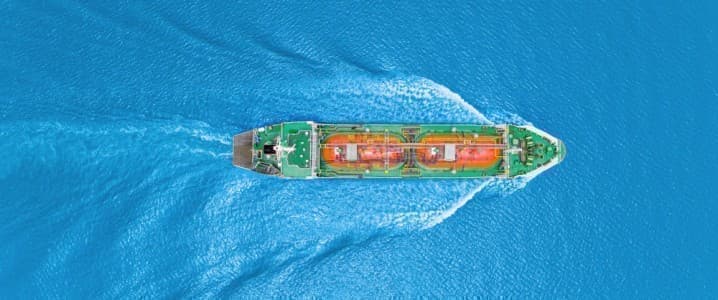Whether on the coasts or in the high seas, marine ecosystems are exposed to growing threats linked to the intensification of human activities. No area of the planet is spared, with a large part (41%) now being seriously affected.
These threats are multiple, here are the main ones.
Firstly, overfishing, which depletes fish stocks, disrupts food chains and can lead to the collapse of marine ecosystems; in fact, it is estimated that more than 55% of the ocean surface is exposed to intense exploitation of fisheries resources.
Bottom trawling, still sometimes authorized in certain protected areas (Natura 2000 areas, Pelagos sanctuary and regional natural parks for example), causes considerable damage to the seabed and leads, on a large scale, to a resuspension of accumulated carbon stocks. for thousands of years.
Then there is the destruction of coastal habitats – seagrass beds and forests (posidonia seagrass beds, eelgrass beds, kelp), mangroves and coral reefs. This destruction is generally linked to urbanization, mining, pollution and unsustainable agricultural practices, such as shrimp aquaculture, responsible for the disappearance of more than 35% of mangroves, spaces which nevertheless contribute significantly to carbon storage.
There are also all these human activities which generate various forms of pollution affecting marine ecosystems. Pollution by toxic chemicals (e.g. pesticides and other inputs), petroleum products, plastic waste and nutrients from agricultural, aquaculture or urban activities can have harmful effects on marine organisms.
In the context of global warming
A global threat, global warming also has significant impacts on marine ecosystems. Rising water temperatures, ocean acidification, sea level rise and increased frequency of extreme weather events (like storms) threaten coastlines, coral reefs, fish, marine mammals and other species.
The appearance of invasive alien species in marine ecosystems can also have devastating effects. They can in fact compete with native species, alter marine habitats and disrupt the balance of food chains. The case of the dazzling invasion of Caribbean waters by the lionfish constitutes a textbook case.

Finally, let us highlight the unsustainable exploitation of marine resources – petroleum products, gas, metals and minerals – and that of fishing resources which can lead to overexploitation and degradation of marine ecosystems.
Preserve marine resources
How can we mitigate these threats? Mainly through the creation of marine protected areas (MPAs), the promotion of sustainable and respectful fishing, raising public awareness of environmental protection, reducing pollution and adopting conservation policies.
The creation of MPAs – and particularly those highly or totally protected, with different levels of protection existing within these spaces – represents a key tool in preservation efforts. Let us recall, using the definition given by the IUCN (International Union for Conservation of Nature), that a marine protected area (MPA) constitutes:
“a clearly defined geographical area, recognized, dedicated and managed, by legal or other effective means, to ensure the long-term conservation of nature and associated ecosystem services and cultural values. »
Among the beneficial effects of these areas is the fact that they provide essential habitats for many marine species, including threatened or endangered species, such as large predators. They reduce the stress on organisms linked to human activities and promote the genetic diversity essential to good resilience in the face of future changes.
By limiting harmful human activities, such as industrial fishing or habitat destruction, these areas also allow ecosystems to renew themselves and regain their functionality. It has thus been shown that coral reefs protected by MPAs offer better resistance to flooding.
MPAs also play a role in mitigating climate change. Marine ecosystems, such as mangroves, seagrass beds, sandy-mud beds and coral reefs, store significant amounts of carbon and help, to some extent, to reduce climate-damaging greenhouse gas emissions. climate balance.
These spaces also bring many socio-economic benefits to local communities. By helping to promote sustainable tourism, which attracts visitors interested in the natural beauty and biological richness of protected areas. So much so that it is sometimes necessary to regulate the flow of visitors, as at Calanques Park since summer 2022, to limit their impact. They can also support artisanal fishing activities by preserving fish stocks and providing breeding grounds. When MPAs benefit from a high level of protection, their biomass is more than 4 times greater inside than outside the MPA; This ultimately benefits local artisanal fishing.
Aerial view of the Marseille creeks
The Calanque de Sormiou, near Marseille. In the summer of 2022, the Calanques National Park introduced access quotas to combat the destructive effects of overcrowding.

Not enough strong protection
Today, if the French government’s ambition to extend marine protected areas to 33% of its maritime territory is laudable, the fact remains that a very small proportion of these MPAs are fully protected.
If, officially, more than 23% of French waters have MPA status, barely 1.7% benefit from strong protection: 0.05% in mainland France and 1.65% in the Overseas Territories (including 80% in the French Southern and Antarctic Lands).
Finally, it is regrettable that the French MPAs with strong protection are very unevenly distributed across the territory, since 97% of them are located in the overseas territories (if we include New Caledonia) and only 3% in mainland France, precisely where anthropogenic pressures are the most varied and the greatest.



